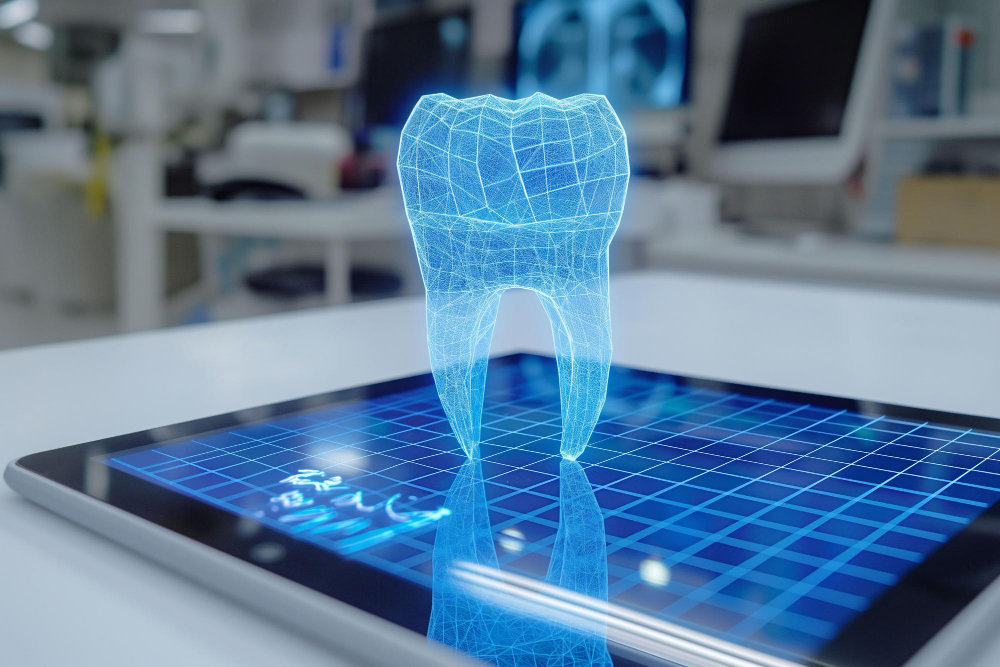
A Digital Smile Makeover
Technology has become an integral part of our lives, transforming the way we live, work, and interact. Dentistry is no exception to this digital revolution. From diagnostic tools to treatment techniques, technology is reshaping the landscape of dental care, offering patients and dental professionals alike a digital smile makeover. Let’s explore the various ways technology is revolutionising dentistry, enhancing patient experiences, and improving oral health outcomes.
1. Digital Imaging and Diagnostics
One of the most significant advancements in dentistry is the shift from traditional X-rays to digital imaging. Digital radiography and cone-beam computed tomography (CBCT) provide detailed, high-resolution images with minimal radiation exposure. These images offer a comprehensive view of the oral cavity, enabling dentists to detect dental issues earlier and plan precise treatment strategies.
2. CAD/CAM Dentistry
Computer-Aided Design and Computer-Aided Manufacturing (CAD/CAM) technology have revolutionised dental restorations. With the help of intraoral scanners, dentists can create digital impressions of patients’ teeth, eliminating the need for messy traditional impressions. CAD/CAM software then designs custom crowns, bridges, and veneers, which are milled, or 3D printed in the dental office, allowing for same-day restorations.
3. Digital Treatment Planning
Technology enables dentists to create detailed, virtual treatment plans for complex dental procedures. With advanced software, they can simulate orthodontic treatments, implant placements, and smile makeovers, giving patients a preview of the final results. This enhances communication between dentists and patients, ensuring everyone is on the same page before starting treatment.
4. Laser Dentistry
Lasers have become a valuable tool in various dental procedures. They offer precision and efficiency in soft tissue management, gum surgeries, cavity preparation, and teeth whitening. Laser dentistry minimises discomfort, reduces bleeding, and promotes faster healing, making it a preferred choice for many patients.
5. Teledentistry
With the rise of telehealth, dentistry has embraced teledentistry as a means of delivering remote dental care and consultations. Patients can connect with dentists virtually for assessments, advice, and follow-ups. Teledentistry is especially valuable for patients in remote areas or with limited mobility, improving access to dental care.
6. Artificial Intelligence and Digital Smile Design
Artificial intelligence (AI) is making waves in dentistry, particularly in digital smile design. AI-powered software can analyse facial features, tooth shape, and colour to create personalised smile designs tailored to each patient’s unique characteristics. This technology ensures optimal aesthetics and patient satisfaction.
7. Enhanced Patient Education
Technology empowers patients to take an active role in their dental care. Interactive educational tools and 3D animations help patients better understand their dental conditions and treatment options, enabling them to make informed decisions about their oral health.
Technology is reshaping dentistry, empowering dental professionals with advanced tools and techniques to deliver exceptional patient care. From accurate diagnostics to precise treatment planning and innovative procedures, technology has elevated the standards of dental practice. As technology continues to evolve, the future of dentistry holds even more exciting possibilities, promising improved oral health outcomes and digital smile makeovers for patients worldwide. Embracing these digital innovations, dental practices can ensure their patients receive the highest quality care in a comfortable and efficient manner, ultimately paving the way for brighter, healthier smiles.

